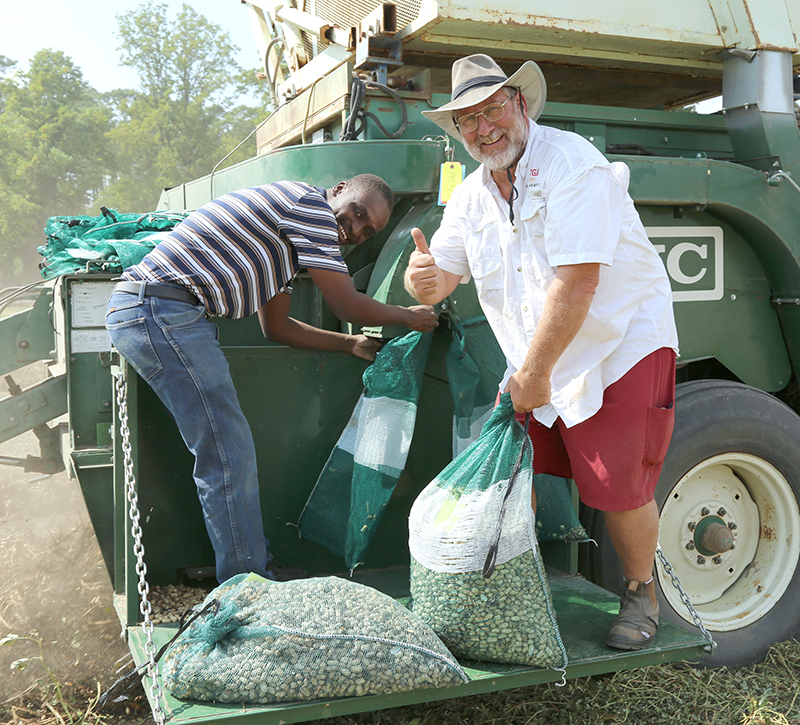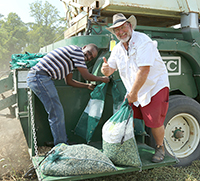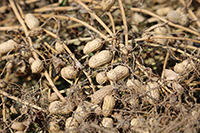Peanut harvest season in Sylvester, Georgia, is more than just farmers digging up the fruits of their labor. It’s a time of celebration for agriculture, the sector that drives the economic footprint in this rural community.
Sylvester is just one Georgian town that exudes peanut pride. Plains and Brooklet also host peanut festivals in the fall, and Blakely hosts the Peanut Proud Festival in the spring.
“It’s kind of what these towns are made of, so they want to show that off and get a chance to show appreciation for the agricultural community as a whole. I think all smaller communities have some type of celebration, no matter what kind of festival you’re talking about,” said University of Georgia Cooperative Extension peanut agronomist Scott Monfort.
Sylvester claims the title of “Peanut Capital of the World” and — every October for the past 56 years — the town has played host to the Georgia Peanut Festival. Sylvester is also home to the factory that produces Peter Pan brand peanut butter.
“The festival is a celebration of our farmers, especially our peanut farmers,” said Karen Rackley, director of the Worth County Chamber of Commerce.
In an annual parade, local peanut farmers are recognized for their contributions to the community, including the awarding of Farmer of the Year and Junior Farmer of the Year honors. On average, between 12,000 and 15,000 people attend the festivities every year.
According to the Georgia Peanut Commission, 1.79 million tons of peanuts were harvested from 825,000 acres in Georgia in 2017, accounting for more than 50% of peanut production in the U.S.
While harvest season is a source of pride for Georgia’s rural communities, it also drives local economies. Farmers hire additional workers to help get the crops out of the field in a timely manner, and peanut buying points — where peanuts are weighed, cleaned, dried, inspected and graded — hire additional workers in the fall so peanuts can be graded and farmers can return to the field to get the next load.
“Most every community and every county has one to two buying points. You recognize that peanut harvesting provides seasonal employment in these counties,” said Armond Morris, a peanut farmer in Irwin and Berrien counties and chairman of the Georgia Peanut Commission. “Peanuts help to pay the farm note, which is very important to everybody — from the car and tractor dealerships to banks and other businesses. It helps generate business and employment. Everybody gets excited.”
Because every ton of peanuts throughout Georgia is graded at these buying points, the Georgia Federal-State Inspection Service also needs additional employees to keep the harvesting system running smoothly.
“You don’t realize the number of hours that farmers put in during harvest. It is extremely important for them to harvest their crop as soon as possible. With this in mind, a grower needs to be able to harvest his field, put it in the trailer and take it to the buying point, and be able to pick up empty trailers for the next day,” Monfort said.
He estimates that two-thirds of the employees working at the buying points are seasonal workers.
Since peanut producers have a finite window during which to harvest their crops before the value begins to diminish, many will help out fellow farmers to ensure the peanuts are dug and picked when they’re ready. This shared effort speaks to the camaraderie felt among Georgia farmers this time of year.
“You have to dig them when they need to be dug or they’ll start falling off. And you’ve got to pick them when the moisture’s right, so there’s a narrow window there,” said Russ Griffin of Chula, Georgia, who farms 140 acres of peanuts. “That’s where we will team up and jump in there and help each other out.”
For more information about peanut production in Georgia, see t.uga.edu/59X.









